|
THE DISAPPEARANCE OF AIRPORT OBSERVATION DECKS
Even though flying has become a very common phenomenon, people of all ages still love to come to the airport to watch aircraft and enjoy the airport atmosphere. There was a time when most major airports offered an outdoor viewing terrace or observation deck. From the 1970s onward, most of them were closed due to security concerns or to make way for terminal expansion. There's a few notable exceptions left. Even though it is a fraction of its former size, Amsterdam Schiphol's "Panorama Terrace" is still a fantastic venue. Many airports in Germany and Japan also offer excellent viewing facilities. In this blog post we take you back to ten super cool airport viewing terraces and decks, some of which are still around today! Don't forget you can click on the images to expand.
1. Zurich Dübendorf & Kloten Airport
The viewing terrace of Zurich Dübendorf Airfield in 1946. Dübendorf functioned as Zurich's main airport between 1919 and 1948.
Zurich Kloten Airport's viewing terrace sometime during the 1960s.
2. Los Angeles International Airport
The Theme Building was the symbol of LAX's new Jet-Age terminal complex. Opened in 1961, it featured a restaurant and an observation deck with sweeping, unobstructed views of the airport and its surroundings. At present, the Theme Building is closed for the public.
3. Frankfurt Airport
The outdoor restaurant at Frankfurt Airport, sometime during the 1950s.
Opened in 1972, Frankfurt's Terminal 1 had an absolutely fantastic observation deck on top of the two star-shaped concourses (Flugsteig B), offering great views of all the action.
The deck was closed in 2006 in order built a new floor on top of the existing structure. There's still is a viewing terrace on top of nearby Terminal 2, but the views are inferior to those offered by T1. Read more about Frankfurt's Terminal Mitte here.
4. Nairobi Embakasi Airport
The observation deck at Nairobi's Embakasi Airport, now Jomo Kenyatta International Airport, sometime during the late 1960s.
In 1978, passenger traffic was moved to a new new complex on the far side of the airport. No new viewing facilities were provided.
5. Hong Kong Kai Tak Airport
Hong Kong's Kai Tak's 1962 passenger terminal featured an excellent observation deck. The deck closed in the early 1970s due to terminal expansion.
Want more stunning airport photos & stories?
Sign up to our newsletter below to know when new content goes online!
6. Amsterdam Schiphol Airport
Amsterdam Schiphol has a long tradition of catering to visitors, as is evident in this 1950s image.
Schiphol's new passenger terminal, opened in 1967, photographed from the platform tower. In the early days, Schiphol's "Panorama Terrace" stretched out onto Pier D (then Pier B).
Visitors watching 1970s ramp action. I hope these people realized how good they had it!
Another great 1970s view of the Panorama Terrace. The section on top of Pier D was closed in the late 1970s, arguably for security reasons.
And yet another nostalgic shot of the Panorama Terrace at Amsterdam Schiphol Airport in the late 1970s. Over the years, large sections of the terrace were closed. This particular stretch is no longer accessible, but at least the terrace is still there.
See more vintage images of Schiphol here or read about the airport's notorious runway in the middle of nowhere here.
Like this article?
Please consider supporting us with a simple donation!
Your support will help us protect & preserve the heritage of the world's great airports.
7. London Heathrow Airport
The viewing terrace on top of the Queen's Building at Heathrow in 1957.
Spectators admire a BEA Vickers 806 Viscount on a beautiful summer day in 1969.
The terrace closed in the 1970s due to the threat of terrorist attacks by the IRA. Read about Heathrow's original development plan here.
8. Miami International Airport
The observation deck of Miami International Airport, photographed in the early 1960s. In the early 1970s this section was closed to make way for an automated people mover system, connecting the terminal with the new international satellite at the end of the pier.
Luckily, the new satellite building boasted a viewing deck as well. However, it closed in the late 1980s.
9. Düsseldorf International Airport
The observation deck on top of Düsseldorf International Airport's Pier B. In 1996, a fire destroyed part of the terminal, and major rebuild followed. The observation deck was maintained but has been closed since the Covid pandemic.
Read more about Düsseldorf's proposed super airport here.
10. Melbourne Tullamarine Airport
Melbourne Tullamarine Airport's passenger terminal (1970) also featured an excellent observation deck overlooking the international concourse. The deck was closed in the early 2000s.
Interestingly, in November 2005 it was reopened for a few days for the promotional visit of the Airbus A380 prototype.
Bonus: Berlin Tegel Airport
Berlin Tegel Airport's 1974 passenger terminal featured an excellent observation deck along its entire length. It remained open until Tegel's closure in 2020.
We want to close with a call to airports around the world:
In a time when there is a growing resistance to aviation, we think it makes sense to take good care of the people that still support you (and gain a few more enthusiasts in the process!). Thus, bring back those terraces and aircraft spotter locations! Airports like AMS, FRA, and many others prove it can be done so safely and securely. In addition, most people are happy to pay a few bucks for entering such facilities and they will likely buy food and drink at the airport as well. Thus, also from a financial point of view it makes sense! Which airport observation deck is or was your favorite? Tell us in the comments below!
Like this article?
Please consider supporting us with a simple donation!
Your support will help us protect & preserve the heritage of the world's great airports.
6 Comments
On Wednesday, January 28, 1970, the wide-body era at Frankfurt started rather unexpectedly with the arrival of a diverted Pan American 747. Read the story behind the unplanned visit below!
LONDON FOG
Pan American World Airways Boeing 747-121 N737PA "Clipper Red Jacket," had been underway from New York's Kennedy Airport to London Heathrow. Scheduled Boeing 747 service on the JFK-Heathrow route had only commenced a few days prior, on Thursday, January 22. It was the first route on which Pan Am had deployed the 747 and it was the world's first scheduled 747 service. That day, the 362-seat aircraft carried 177 passengers and a crew of 21, among which five cockpit crew. On the controls of Flight Two was veteran pilot, Captain Jess Tranter, part of Pan Am's elite team of 747-qualified pilots - who also piloted the 747 on the test flight to Heathrow on January 11. That morning London was completely fogged in and visibility was down to only 50 metres (164 feet). Thus, Captain Tranter decided to divert to Frankfurt's Rhein Main Airport, were Pan Am had a major base and which was the airline's main alternate for London. News about the upcoming arrival of the "Jumbo-Jet" spread around Frankfurt Airport like wildfire and anyone who could interrupted their work to witness the arrival of what the airport press release referred to as "The Flying Cinema," presumably because the 747 featured movie screens, a novelty at the time.
The plane touched down at Frankfurt's Rhein-Main Airport at 8:36 am that morning. After landing, the 747 was guided by two "follow-me" vehicles to gate B46, at Frankfurt's brand-new "Terminal Mitte," which was still largely under construction.
Terminal Mitte was designed for the 747 and B46 was one of several gates at Frankfurt that could connect three passenger boarding bridges to the 747, two on the portside and one on the starboard side. According to the press release, two boarding bridges were sufficient to allow the 177 passengers and 21 crew to disembark.
A RUSHED WELCOME
Lord Mayor of Frankfurt Professor Dr. Willy Brundert was rushed to the airport for an improvised welcome and gave Captain Tranter and his crew an illustrated book about Frankfurt Airport. Many hundreds of airport and airline employees, as well as construction workers working on Terminal Mitte came by on foot or by airport vehicle to admire the gigantic jet. The airport press release specifically mentioned that ramp supervisors were not amused by all the vehicles cluttering the ramp! The aircraft was parked at the terminal for about five hours, providing ground crews a golden opportunity to practice their new procedures for the 747.
DEPARTURE
At noon, the passengers, who had been waiting in the "Transit Restaurant," were asked to board the aircraft. However, Captain Tranter was advised that the airspace over London was heavily congested and that he would likely be put in a holding pattern for an hour. Thus, he decided to delay departure to Heathrow instead. Over an hour later, two tow trucks pushed back the 747 out on to the platform, after which it taxied to the threshold of runway 25R. As it was the middle of the afternoon rush hour, the aircraft had to hold behind five other aircraft. Finally, after a take-off run of barely 2000 metres (6,560 feet) the Boeing 747 was airborne at 1:54 pm, five and a half hours after it had touched down at Frankfurt.
SCHEDULED 747 SERVICE FROM FRANKFURT
Pan Am started scheduled 747 daily service from JFK to Frankfurt (via Heathrow) on April 5, 1970. Lufthansa was the first European airline to provide its passenger the opportunity to fly a jumbo jet, being the second international airline following Pan Am, commencing daily service between Frankfurt and New York JFK on April 26. There's a story on the web claiming that the diverted Pan Am landed 30 minutes before the first scheduled 747 arrival, which was TWA's inaugural 747 service between JFK and Frankfurt. However, TWA didn't start scheduled service between New York and Frankfurt until January 6, 1971.
Read more about Frankfurt's Jet-Age "Terminal Mitte" here. Read more about the airport's history here.
Did you fly on the 747 in the early days? Was the trip glitch free? Share your experience in the comments below!
ACKNOWLEDGEMENTS
Thanks again to my friends at the Fraport Archive, Markus Grossback and Annette Schmidt, for their kind help in preparing this article!
More airport articles: click here
Want more stunning airport photos & stories
Sign up to our newsletter below to know when new content goes online!
Edit custom HTML. Pase the following:
On May 16, 1992, Munich's Riem Airport closed after 53 years, to be replaced by the city's brand-new "Franz Joseph Strauss International Airport." In today's blog post, we revive Riem's memory with some amazing images from the period 1972-1992! A 1980s airside view of Riem Airport's terminal building, featuring a couple of Lufthansa classic jets. Many older Munich-based "Lufthanseaten" remember the characteristic airport with great affection. Construction of Riem began in 1937. The airport was put in operation on October 25, 1939, when the first civilian flight , a Lufthansa Junkers Ju 52/3m arrived from Berlin. A 1988 aerial of Munich Riem, looking northeast. From this view it is apparent that the airport did not have any room to expand and the search for a new airport kicked off as early as 1963. In 1969, runway 07R/25L was lengthened to its final length of 2,804 meters (9,199 feet). Pan Am Boeing 747-121 "Clipper Midnight Sun," photographed visting Riem sometime during the late 1970s/early 1980s. A 1980s landside view of the passenger terminal. The building was designed by German architect Ernst Sagebiel, who also designed Berlin Tempelhof, Dresden, and Stuttgart, which were being built at the same time. A 1970s view of the check-in area. How cool that back then you could open a window for some fresh air! A mid-1970s aerial of Riem's terminal complex. In 1971, a DM 36 million expansion was completed, doubling the airport's capacity to 7 million annual passengers and readying the airport for the influx of visitors during the Summer Olympics of 1972. The expansion included six gates equipped with boarding bridges, which were still pretty much a rarity at airports in Europe at the time. British Airways Concorde with the registration G-BOAD during a visit to Riem on August 10, 1983. Want more stunning airport photos & stories?
Sign up to our newsletter below to know when new content goes online! An undated view of one of the gate holding lounges. An aerial taken on on 21 March 1973. This was the day of the European Champions' Cup quarter finals between Ajax Amsterdam and FC Bayern, which brought a large number of football charters to the airport. Visitors include a KLM DC-8 and DC-10. A busy apron scene in the late 1980s. Visitors include a Boeing VC-137C United States Air Force aircraft, one of two customized Boeing 707s, which were specifically configured and maintained for use by the president of the United States. An airside view of the terminal building taken a few days after the closure of Riem. In 1991, its final full year of operation, 10.8 million passengers were handled. After closure, Riem was redeveloped into an office and convention area. This aerial view looks west toward Munich. Thankfully, Riem's air traffic control tower has been preserved and is now part of the corporate headquarters of Brainlab AG, a Munich-based technology company. The company rents out the tower as an event space. Better still, the tower cabin contains a bar. Now that's the way to do preservation, folks! For more information and images follow this link. Bonus: It's movie time! A cool 1992 video about Riem's history and closure. Also briefly covers the new airport. It's in German, but there's lots of cool footage! Credit: Flughafen München GmbH. Another, longer 1992 documentary on Riem's history, closure, and the new airport. In German but well worth the footage! Credit: Flughafen München GmbH. Did you travel through Riem Airport? What was the experience like? Share your impressions in the comments below! More airport articles: Click here Want more stunning airport photos & stories?
Sign up to our newsletter below to know when new content goes online!
Concorde touches down at LAX on an overcast day on Wednesday, October 23, 1974, the first time the supersonic transport (SST) visits Southern California. The visit is part of a promotional tour to airports around the world.
The UFO-like Theme Building (1961) at Los Angeles International Airport, designed by Pereira & Luckman, mirrored Los Angeles' dream to become the city of tomorrow and indeed, Concorde and the Theme Building are a match made in heaven!
Thousands of spectators came by to view the landing at 3:49 PM that day, a few minutes later than planned. Concorde flew in from Anchorage, Alaska, where it had departed at 1:16 PM.
Concorde rolling out after the first ever landing at LAX with contemporary airliners being visible in the background.
After landing, Concorde parked at the Satellite Building #2, which was used for international flights. The aircraft, with the French registration F-WTSA, was painted in a hybrid Air France/British Airways livery.
Many people showed up to view the aircraft during a static display that evening and the next day. Concorde officials estimated that 100,000 people from throughout Southern California came to view the aircraft, creating massive traffic jams at the airport.
Concorde left on Friday, October 25, at 9:00 AM and headed to Acapulco, Mexico, the next destination on the promotional tour. The supersonic jet would not become an operational part of Air France and British Airways flights until Jan. 21, 1976, when British Airways began using it for London-Bahrain and Air France on the Paris-Rio de Janeiro routes. At first, the plane was not allowed to land in the US because of noise and air pollution concerns. Dulles International Airport in Washington, D.C., was granted permission by the US Department of Transportation for supersonic flights in May 1976. After first banning the plane, Kennedy International Airport in New York City also began allowing it in November 1977. However, despite years of battling, Concorde never would be approved to operate out of LAX. Its noise levels, especially on takeoff, were deemed too loud to meet the airport’s noise standards and the airport beat back several attempts to allow SST aircraft to use its facilities. Read about how airports prepared for what seemed to be the inevitable coming of the SST here. Read more about Concorde's promotional tours and early service here.
More airport articles: Click here
Want more stunning airport photos & stories
Sign up to our newsletter below to know when new content goes online!
ACKNOWLEDGEMENTS
This article borrowed heavily from Sam Gnerre's great blogpost on Concorde's LAX visit. Give it a read!
Charlotte's Jet-Age terminal was opened 40 years ago on May 2, 1982. The new terminal boasted 25 gates equipped with boarding bridges and was more than twice as large as the previous terminal, which opened in 1954.
In today's blog post we will take a look at some amazing images, which were taken around the time of opening!
The ramp in between concourses B and C, photographed shortly after the opening of the new USD 64 million terminal in May 1982. In 1979, Piedmont Airlines chose Charlotte as the hub for its expanding network. The airline grew from three gates in the old terminal to 12 in the new one.
An aerial of the new terminal taken shortly after opening in May 1982. The new 325,000-square-foot (30,200-m2) passenger terminal was designed by Odell Associates.
Concourse B (left in image) featured 10 gates, which were exclusively used by Eastern Airlines. Concourse C boasted 15 gates, 12 of which were used by Piedmont, two by Delta, and one by United. The walk from the end of the concourse to the other was 1,900 feet or about a walk of six and a half minutes. Concourse C was lengthened in 1985 and B in 1987/88. Concourses A and D were opened in 1986 and 1990 respectively.
A view of the ticketing lobby shortly after opening. The carpet in the main terminal was bright green and was tweed brown in the concourses. Those colors were chosen to represent the natural beauty of North Carolina and the great outdoors.
Concessions included a Dobbs House restaurant, a bank, a lingerie shop, an ice cream shop, a barber shop, and a video game room. When the new terminal opened, the airport was renamed from Douglas Municipal Airport to Charlotte Douglas International Airport. The airport is named after Benjamin Elbert "Ben" Douglas Sr., who served as mayor of Charlotte from 1935 to 1941. It is the gateway to the city but it doesn't have to be a Taj Mahal
A busy ramp scene showing Piedmont 727s, 737s, a Fokker F28 Fellowship, and an Eastern DC-9. Eastern also operated the first regularly scheduled airline flight from the new terminal: Flight 615 to Atlanta, which left at 7:15, seven minutes after its scheduled departure time.
Just as flight 615 backed out of the gate, Eastern Flight 212 from Columbia was landing, 10 minutes ahead of schedule, to become the first regularly scheduled flight into the new building.
Want more stunning airport photos & stories?
Sign up to our newsletter below to know when new content goes online!
The Piedmont check-in area. When the terminal opened, Piedmont added eight flights to the existing 78. Delta added three flights, for a total of nine. Eastern dropped two flights for a total of 55, while United continued with three departures a day.
Another 1982 overview of the new terminal taken just before sunset. In 1981, Charlotte ranked the 31st busiest airport in the United States. In 2019, it ranked 6th busiest in the nation.
Between 1982 and 1989, Piedmont grew from the initial 12 gates and 86 daily flights to 39 gates and 472 daily flights. In 1989, Piedmont was absorbed into USAir, which had acquired the airline two years prior.
We close with this 1982 nighttime view of Concourse C. This photo was taken by Henry Gasque.
Did you travel through Charlotte's terminal in the early years? Share your CLT memories in the comments below!
More airport articles: Click here
Want more stunning airport photos & stories?
Sign up to our newsletter below to know when new content goes online!
During our recent digs in the AirportHistory.org archives we unearthed a very interesting 1980 British Airways brochure advocating for the construction of a fifth terminal at Heathrow, which could be ready as early as 1989.
Interestingly, permission to build Terminal 4 had just been given the year prior and construction hadn't even started. So, how come British Airways was already lobbying for the next terminal, complete with artist's impressions? Was BA simply extremely forward-looking, considering the long lead time in the UK to build large airport projects? Find out the answer below!
THE NEED FOR CAPACITY
By the early 1970s, serious doubts had arisen about the necessity for a new London airport in the Thames Estuary, 45 miles (70 kilometers) east of Central London. As a result, the focus shifted back to providing additional capacity at existing airports. At the time, the maximum capacity of Heathrow's three terminals was thought to be 30 million annual passengers. Traffic forecasts indicated that there would be a capacity shortfall between 1982 and 1986.
TWO OPTIONS FOR TERMINAL 4
The immediate priority was to build a new Terminal 4 at Heathrow, where pressure was greatest. Planning work started in 1973. One option was to develop the site of the Perry Oaks sludge works on the western side of the airport, where a terminal with a capacity of 15 million passengers could be provided. The site was located between the main runways, decreasing aircraft taxi times. It could be easily connected to the M25 Orbital Motorway, which was being built at the time.
Want more stunning airport photos & stories?
Sign up to our newsletter below to know when new content goes online
The other option was to build a much smaller terminal with a capacity of 8 million annual passengers on a 70-hectare site southeast of the airport.
For obvious reasons, the Perry Oaks alternative was heavily backed by British Airways, which has its home base at Heathrow Airport. However, the Perry Oaks option was ruled out because of the lead time involved in clearing the site, which was believed to be several years. Thus planners chose the southeast site, it being the only site where a new terminal could be built in time before existing capacity limits were reached in the mid-1980s.
In December 1979, the UK government approved the construction of Terminal 4. The terminal, which was to be used for British Airways long-haul flights, would raise the airport's capacity to 38 million annual passengers, which was considered the absolute maximum the airport could handle.
All further future growth was to be channeled through an expanded Stansted Airport, located 42 miles (67 kilometers) northeast of Central London. Obviously, the prospect of having to split its traffic over multiple airports was not an attractive one to British Airways. Thus, soon after the decision to built Terminal 4 was taken, the airline published the aforementioned brochure, arguing for the development of Heathrow beyond Terminal 4 with a fifth terminal. It could readily present the Perry Oaks plans developed previously.
WHAT HAPPENED AFTER
Built at a cost of GBP 200 million, Terminal 4 was opened by the Prince and Princess of Wales on April 1, 1986. Planning studies for Terminal 5 got underway soon after in February 1988. BAA formally announced its proposal for construction of Terminal 5 in May 1992, submitting a formal planning application on February 17, 1993. T5 was inaugurated on March 14, 2008 and is now the home base of British Airways. In 2019, Heathrow handled almost 81 million passengers, more than twice the amount planners thought Heathrow was capable of back in the 1970s!
If Terminal 4 had been built at the Perry Oaks site, how would Heathrow have developed later on? Let us know your thoughts in the comments below!
Did you know that plans to build additional runways at Heathrow date back all the way to 1946? You can read that story here. A special thanks to Heathrow expert Kevan James. Check out his website here.
More airport articles: Click here
Add the Terminal 5 brochure to your airport collection!
Click the images below to purchase a high-quality digitized copy of this 26-page public information brochure, a must-have for airport history fans!
Want more stunning airport photos & stories?
Sign up to our newsletter below to know when new content goes online
Nuestros fans de Sudamérica nos envían con frecuencia mensajes en los que nos critican por descuidar los aeropuertos de su hermoso y sorprendente continente. Tienen razón, por supuesto, y hoy, ¡vamos a empezar a corregir el registro!
En lo más profundo de la bóveda de AirportHistory.org, hemos encontrado recientemente el Plan Maestro de 1969 del Aeropuerto Internacional de Maiquetía "Simón Bolívar", la principal puerta de entrada internacional de Venezuela. A mediados del siglo XX, Venezuela era un país petrolero en auge. Con el rápido crecimiento del transporte aéreo y la abundancia de dinero, el gobierno planificó un enorme proyecto de expansión, que sólo se ejecutó parcialmente. ¿Tiene curiosidad por saber lo que los planificadores tenían originalmente en mente para el futuro de Maiquetía? Sin más preámbulos, ¡echemos un vistazo!
UNA BREVE HISTORIA
Conocido originalmente como Aeropuerto de La Guaira, el aeropuerto fue construido en 1930 por Pan American Airways. Para 1949, contaba con una pista de 1.524 metros, que posteriormente se amplió a 3.000 metros. El edificio original de la terminal, hacia el extremo oriental del aeropuerto, se inauguró en 1948. Esta vista aérea de 1948 de lo que entonces se llamaba Aeropuerto de La Guaira, muestra la pintoresca ubicación del aeropuerto en la orilla del mar.
PLAN MAESTRO
En 1970, Maiquetía atendía a 1,47 millones de pasajeros, lo que lo convertía en el tercer aeropuerto más activo de Sudamérica, después de los aeropuertos de Bogotá-El Dorado y São Paulo-Congonhas. Desde su fundación en 1960, VIASA, la aerolínea nacional de Venezuela, se había convertido rápidamente en una de las principales compañías aéreas de Sudamérica, conectando ciudades de Sudamérica, Norteamérica y Europa. La aerolínea necesitaba un aeropuerto de origen que pudiera acomodar sus ambiciones de crecimiento. En 1968, el gobierno contrató los servicios de la renombrada firma Tibbetts-Abbott-McCarthy--Stratton (TAMS) para preparar los planes para el futuro desarrollo de Maiquetía.
¿Sabías que?
Uno de los expertos encargados del proyecto del Plan Maestro de Maiquetía fue Walther Prokosch, el arquitecto que dirigió el diseño de la terminal de Pan Am en el aeropuerto JFK y el Plan Maestro del aeropuerto DFW.
NUEVAS PISTAS
Los estudios de tráfico preveían que Maiquetía manejaría 30 millones de pasajeros en el año 2000, 20 veces más que en 1970, por lo que se requería una ampliación radical del aeropuerto. Los planificadores previeron una ampliación a gran escala del aeropuerto hacia el oeste con dos nuevas pistas y un nuevo complejo de terminales de pasajeros. En primer lugar, se construiría una nueva pista 09/27 de 11.483 pies (3.500 metros) entre la pista original 08/26 y el mar. Su construcción implicaría el movimiento de 650 millones de pies cúbicos de tierra. La pista se puso en marcha en 1975. Más adelante, se construiría una segunda pista de 215 metros al norte y al oeste de la pista 09/27. Tendría una pista de rodaje de longitud completa y su construcción implicaría la eliminación de una serie de colinas junto a la orilla. La pista debía estar terminada a principios de los años 80, tras lo cual probablemente se cerraría la pista original 08/26.
TERMINALES
En los planos de distribución definitivos, los planificadores prevén una serie de edificios terminales de pasajeros construidos a lo largo de una carretera principal. Al norte habría cuatro módulos terminales para los vuelos internacionales. En el lado sur, el de la montaña, habría un edificio terminal alargado para los vuelos nacionales. En total, habría 48 puertas servidas por puentes de embarque de pasajeros : 24 puertas internacionales y 24 puertas nacionales. Los lados internacional y doméstico estarían conectados por edificios en la mediana de la carretera dorsal, que contendría espacios comerciales. Habría espacio para el estacionamiento de 2800 automóviles. El complejo era demasiado pequeño para justificar una plataforma automatizada de transporte de personas, pero se dejó espacio en el diseño para construirla eventualmente si fuera necesario.
¿Quiere más fotos e historias impresionantes de aeropuertos?
Suscríbase a nuestro boletín de noticias para saber cuándo se publican nuevos contenidos.
DESARROLLO POR FASES
En un principio, todo el desarrollo tendría lugar en el lado norte, con terminales de pasajeros separadas para el tráfico internacional y nacional, que se inauguraron en 1978 y 1983 respectivamente. Las terminales contaban con vestíbulos de embarque a lo largo de la terminal. Más adelante sería posible añadir muelles perpendiculares, aumentando el número de puestos de contacto. En este momento, no está claro si se mantuvo la idea de una terminal doméstica sur a largo plazo o si se eliminó del Plan Maestro desde el principio. ¡Déjenos un comentario abajo si sabe la respuesta!
CRECIMIENTO MÁS LENTO
A lo largo de las décadas, el crecimiento del tráfico fue mucho más lento de lo previsto. Nunca se alcanzaron los 30 millones de pasajeros que se habían proyectado a finales de los años 60. El récord se sitúa en 12,18 millones de pasajeros en 2013, tras lo cual la economía entró en caída libre. Como consecuencia, el Plan Maestro solo se aplicó parcialmente. La pista paralela 09/27 nunca se construyó. Tampoco se añadieron terminales de pasajeros adicionales. En cambio, a principios de la década de 2000, se amplió y remodeló la terminal internacional existente. La terminal nacional no se ha modificado, sólo se ha dotado de nuevos puentes de embarque acristalados. 
Una imagen aérea de la terminal internacional tomada tras la ampliación y remodelación de principios de la década de 2000. El edificio de la administración del aeropuerto y la terminal doméstica son visibles en el fondo. Obsérvese también la construcción en la explanada de la terminal. Iba a ser un hotel de aeropuerto, pero nunca se terminó.
El Plan Maestro de Maiquetía de 1968 es el testimonio de una época en la que el cielo era literalmente el límite para Venezuela. ¡Esperemos que estos tiempos vuelvan algún día!
¿Qué opina de los planes originales para Maiquetía? Háganoslo saber en los comentarios más abajo.
Este artículo ha sido traducido por Gianfranco Perticara. Puede encontrar la versión en inglés aquí. For the English version, click here.
¿Quiere más fotos e historias impresionantes de aeropuertos?
Suscríbase a nuestro boletín de noticias para saber cuándo se publican nuevos contenidos.
Para la versión en español, haga clic aquí
Our fans in South America frequently send us messages requesting we don't neglect the airports on their beautiful and amazing continent. They are right of course, and today we will start correcting the record!
Deep in the AirportHistory.org vault, we recently found the 1969 Master Plan for Maiquetía "Simón Bolívar" International Airport, the main international gateway for Venezuela. In the mid-20th century, Venezuela was a booming oil country. With air travel rapidly growing and money being plentiful, the government planned for a huge expansion project, which was only partially implemented. Curious about what the planners originally had in mind for the future of Maiquetía? Without further ado, let's take a look!
A SHORT HISTORY
Known originally as La Guaira Airport, the airport was constructed in 1930 by Pan American Airways. By 1949, it had a 5,000-foot (1,524-meter) runway, which was later extended to 9,842 feet (3,000 meters). The original terminal building, toward the eastern end of the airport, was opened in 1948.
MASTER PLAN
By 1970, Maiquetía was handling 1.47 million passengers, making it the third busiest airport in South America, after Bogota El Dorado and São Paulo Congonas airports. Since its founding in 1960, VIASA, Venezuela's national airline, had quickly developed into of South America's premier airlines, connecting cities in South America, North America, and Europe. The airline needed a home airport that could accomodate its growth ambitions. In 1968, the government engaged the services of the renowned firm Tibbetts, Abbott, McCarthy, and Stratton (TAMS) to prepare plans for Maiquetía's future development.
Did you know?
One of the experts in charge of the Maiquetía Master Plan Project was Walther Prokosch, the architect who led the design of the legendary Pan Am terminal at JFK Airport and the Master Plan for DFW Airport.
NEW RUNWAYS
Traffic studies projected that Maiquetía would handle 30 million passengers by the year 2000, 20 times more than in 1970, thus requiring a radical expansion of the airport. Planners envisaged a large-scale expansion of the airport to the west with two new runways and a new passenger terminal complex. First, a new 11,483-foot (3,500-meter) runway 09/27 would be built between the original runway 08/26 and the sea. Its consctruction would involve moving 650 million cubic feet of earth. The runway was commissioned in 1975. Later on, a second runway would be built 705 feet (215 meters) to the north and west of runway 09/27. It would have a full length taxiway and its construction would involve the removal of a series of hills beside the shore. The runway was to be completed in the early 1980s, after which the original runway 08/26 would likely be closed.
TERMINALS
In the ultimate layout, planners envisaged a series of passenger terminal buildings built along a spine road. To the north would be four terminal modules handling international flights. On the south side--the mountain side--would be an elongated terminal building handling domestic flights. A total of 48 gates served by passenger boarding bridges would be provided: 24 international gates and 24 domestic gates. The international and domestic sides would be connected by buildings in the median of the spine road, which contained concessions. There would be parking space for 2,800 cars. The complex was too small to justify an automated people mover shuttle but space was left in the design to construct one eventually if needed.
Want more stunning airport photos & stories?
Sign up to our newsletter below to know when new content goes online.
PHASED DEVELOPMENT
Initially, all development would take place on the north side with separate passenger terminals for international and domestic traffic, These opened in 1978 and 1983 respectively. The terminals had boarding concourses running along the length of the terminal. Later on, perpendicular pier could be added, increasing the number of contact stands. At this point, it is unclear if the idea of a south domestic terminal in the long run was retained or if it was dropped from the Master Plan early on. Leave us a comment below if you know the answer!
SLOWER GROWTH
Over the decades, traffic growth was much slower than anticipated. The traffic of 30 million passengers, which had been projected in the late 1960s, was never reached. The record stands at 12.18 million passengers in 2013, after which the economy went into free fall. As a result, the Master Plan was only partially implemented. The parallel runway 09/27 was never built. Also, no additional passenger terminals were added. Instead, in the early 2000s, the existing international terminal was enlarged and re-modelled. The domestic terminal has not been altered, only having been outfitted with new glass-cladded boarding bridges.
The 1968 Maiquetía Master Plan stands testament to a time when the sky was literally the limit for Venezuela. Let's hope these times will return one day!
What are your thoughts on the original plans for Maiquetía? Let us know in the comments below!
More airport articles: click here
Want more stunning airport photos & stories?
Sign up to our newsletter below to know when new content goes online.
On July 1st, 1981, 40 years ago, Singapore Changi Airport opened for traffic. The airport went on to become a consistent favorite with travelers, winning the "World's Best Airport" title for eight years in a row (2013-2020). In a larger context, Changi Airport has played a pivotal role in cementing Singapore's role as a regional hub of trade and commerce. In this short article, we will show you a few rare images from the airport's planning phase and very early years of operation. You might learn a thing or two about your favorite airport that you didn't know before! THE NEED FOR A NEW AIRPORT As the Singaporean economy rapidly grew in the 1960s, traffic at Paya Lebar Airport, the nation-state's only civil airport, boomed as well. Even though Paya Lebar was opened as recently as 1955, by the early 1970s, it became clear that the airport could not accommodate Singapore's long-term air traffic needs; due to urban encroachment, the airport, which only had one runway, could not expand and noise issues were becoming an increasing concern. As a result, in 1975, the Singaporean government took the decision to build a brand-new airport that could serve the country's needs well into the 21st century. The airport would be built at the far eastern tip of the island, which was already the site of Changi Airbase. After completion of the new airport, Paya Lebar would be converted to a military air base. A very rare 1958 color image of Changi Airbase--then called RAF Changi--whose origins date back to World War II. The new airport would be built east of the base (to the left of the image) and bear its name. A total of 200 hectares of swamp land would need to be cleared, and 870 hectares of land needed to be reclaimed from the sea. The great advantage of the location was that both landings and takeoffs would be over water. The main runway visible in the image would become the future airport's western runway. An extremely rare document: the original 1976 Master Plan for the future Changi Airport. The master plan envisaged two parallel runways, which would make Changi only one of a handful of civil airports in the Asia Pacific region to have two runways. The master plan envisaged three passenger terminals, each boasting a capacity of 10 million annual passengers. The plan even had a strategic reservation for a future Terminal 4. With the wisdom of hindsight, we now know that was no luxury! Did you know?
Both the 1976 Master Plan and the design for Terminal 1 were prepared by NACO Netherlands Airport Consultants, the same company that designed Amsterdam's Schiphol Airport.
At the time, Schiphol was a state-of-the-art international transfer hub, receiving the highest praise from passengers and airlines, something the Singaporean government was eager to emulate. Another unique image: a 1976 model of Changi's future passenger terminal area in its final buildout. The terminal layout shown here was not far off from what ended up being built. A major difference with the model is that in the 1990s, piers were added to Terminal 2, and the piers of Terminal 1 were extended. This was due to transfer traffic being much higher than anticipated, leading to an increased need for aircraft gates. Another difference is that in the model the terminals are connected by means of pedestrian bridges. Instead of this, an Automated People Mover (APM) was built. Construction is in full swing in this aerial view, taken in early 1980. Sea-fill and earth fill started in April 1976 and were completed by May 1977. The foundation stone for Terminal 1 was laid in August 1979. At one point, more than 2,500 workers were employed at the site. The total construction cost of Phase 1 was SGD 1.3 billion (USD 964 million)--a hefty sum, let alone 40 years ago! An aerial image of Changi Airport's Terminal 1, ca. 1984. Terminal 1 had an annual capacity of 10 million passengers and featured 22 gates equipped with passenger boarding bridges, a luxury only found at a few airports in Asia at the time. In 1982, its first full year of operation, Changi Airport handled 8.6 million passengers and 217,000 tonnes of cargo. By 2019, this had grown to a whopping 68.3 million passengers and 2.01 million tonnes of cargo. An early 1980s interior view of the check-in hall in Terminal 1. The terminal featured six check-in islands and 120 check-in counters. Terminal 1 had 32 shops and seven food and beverage outlets--a good number for a large, modern airport terminal at the time, but not by today's standards where food and beverage has become the money maker for airports. Today there are 140 F&B outlets serving up various cuisines across all four terminals. Like this article? Support us by donating just $2.95 and receive a fascinating Changi download! For the price of a cup of coffee you can help our mission to protect & preserve the heritage of the world's great airports!
As a token of our thanks you will receive a fascinating digitized 28-page brochure from 1980 introducing the 'future' Changi Airport!
A 1981 exterior view of the newly-built Terminal 1, which at the time cost SGD 250 million (USD 185 million) to build. In 1981, Changi handled 6,888,000 passengers. Did you know?
In its first two weeks of operation, 250,000 visitors – or 10% of the entire population of Singapore back then – visited the airport. An aerial of Changi Airport, taken ca. 1986, showcasing its orderly, master planned layout. In the middle of the image, earthworks are underway for the construction of Terminal 2. Are you able to spot the remnants of the old RAF Changi? Another view of Terminal 1 during rush hour. To the right we can see the Mylar Cord Waterfall that “rained down” in Terminal 1 for 31 years, until it was replaced in 2012 with the Kinetic Rain installation. Passengers awaiting their flight at one of the gates. Changi Airport's signage was also inspired by that of Amsterdam's Schiphol Airport--but whereas Schiphol has the yellow bright signs with black letters, this was inverted for Changi. A vintage view of the baggage reclaim area of Terminal 1. A 1986 view, looking northwest towards Terminal 1. Changi was only the third airport in the Asia Pacific region to feature an aircraft taxiway bridge. Which airports had them first, you ask? You can find out the answer here! BONUS: A fascinating video from the National Archives of Singapore, covering the airport's design, construction and early years of operation. What are your thoughts about Singapore's Changi Airport? Leave your comments below! More airport articles: Click here Want more stunning airport photos & stories?
Sign up to our newsletter below to know when new content goes online! I want to extend a special thanks to Hein Baijer for making available the NACO materials.
Following last week's very popular Memphis post, we want to share some more very rare images with you, this time of Portland International Airport in 1963.
They were part of the same batch as the Memphis images. This time it concerns all exterior shots. There is relatively little historical material on "PDX" out there from the early days--let alone in full color--with the exception of the obligatory postcard. Even if it's just a few images, they are so unique that we thought it was worth a little standalone post. Now, let's have a look! You can click the images to enlarge.
An exterior view of Portland's terminal building, which opened in 1959. The terminal cost USD 4.25 million and took two years to build.
A view of the airport parking lot taken from the airport control tower. Parking was a breeze in those days!
A ramp view looking toward the terminal building. A Northwest DC-4 is parked at the concourse. Other major operators at PDX were United Airlines, Western Airlines, and West Coast Airlines, the last of which served local feeder routes. I just love those ramp lights!
A view of the northern concourse, which was used by United Airlines. Later on in the 1960s the concourses were fitted with boarding bridges.
We end with this view looking west toward the southern concourse. This concourse was completely rebuilt in 1973.
We hope you enjoyed these vintage images of Portland Airport. There's a LOT more where that came from so make sure you sign up for the newsletter to know when new content goes online!
If you're interested in purchasing large, high-quality versions of some of the images above, then please visit the AirportHistory Digital Library.
Want more stunning airport photos and stories?
Sign up to our newsletter below to know when new content goes online! |
With a title inspired by the setting of the iconic 70s film "Airport", this blog is the ultimate destination for airport history fans.
Categories
All
About me
Marnix (Max) Groot Founder of AirportHistory.org. Max is an airport development expert and historian. |









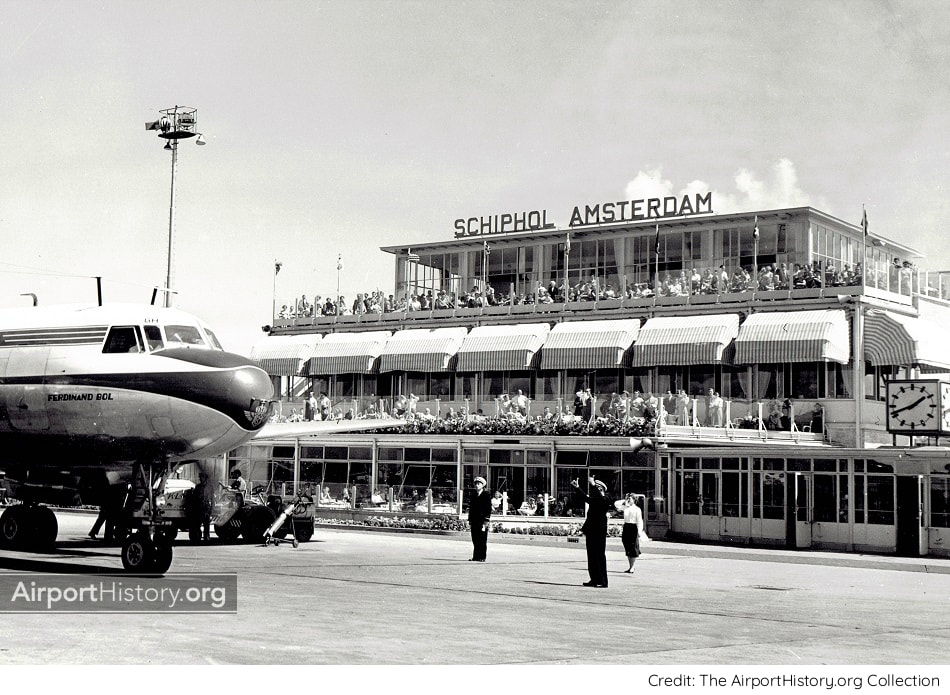





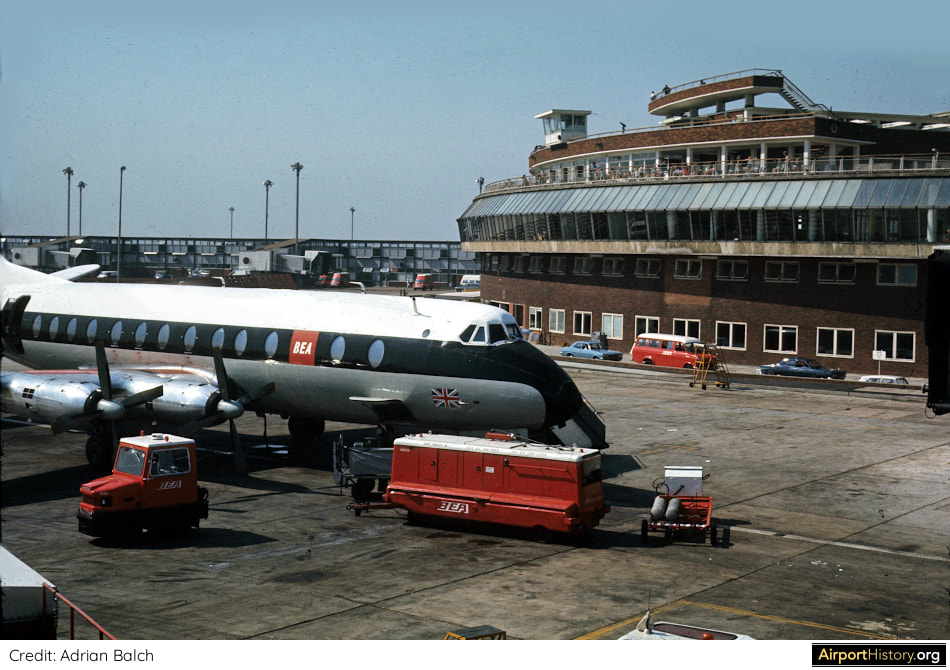

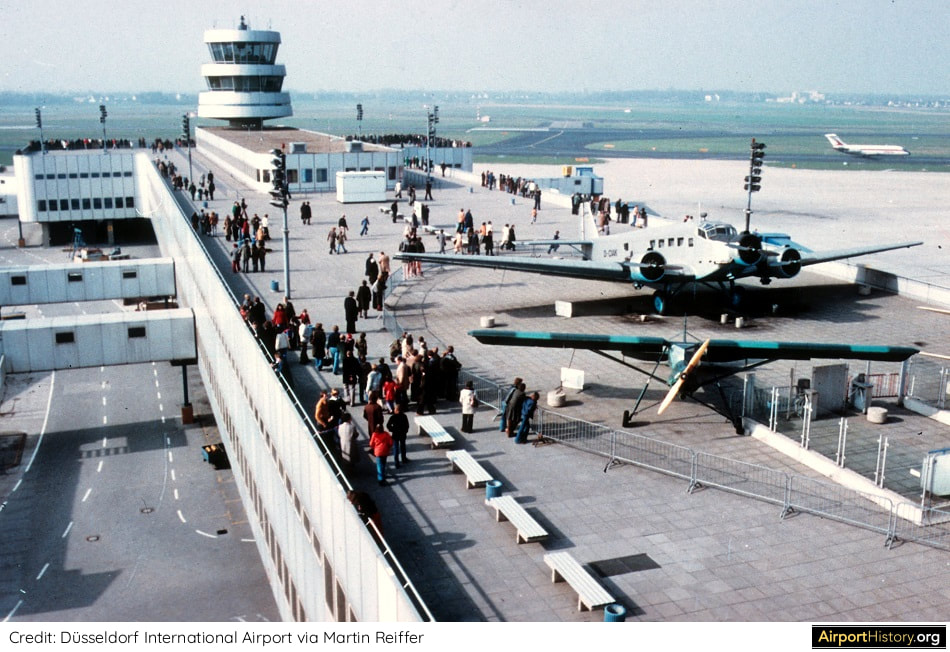








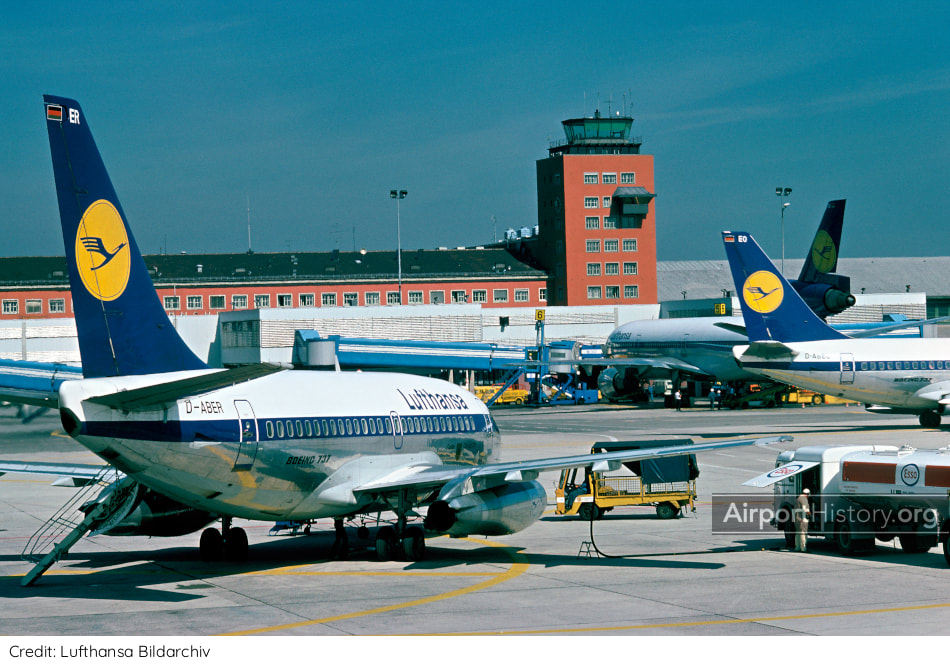









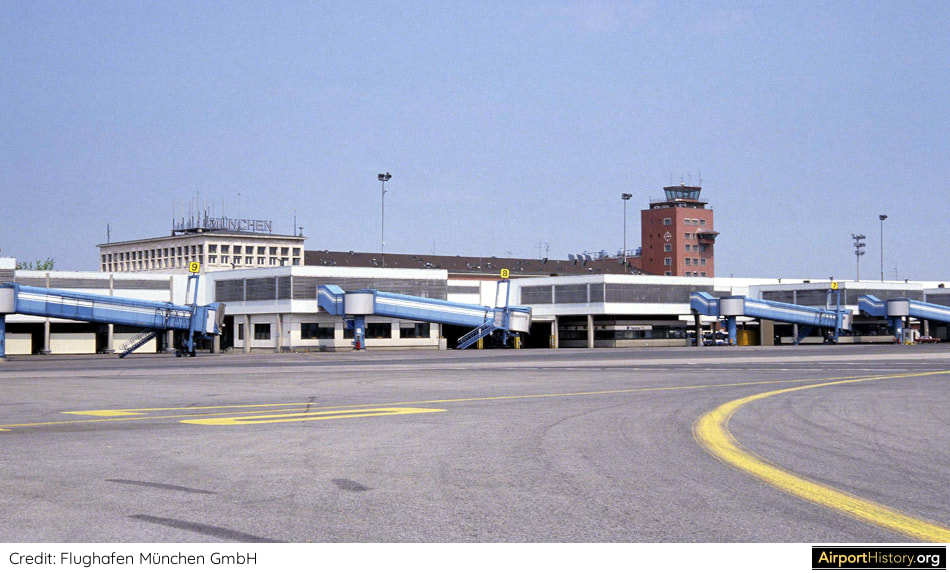








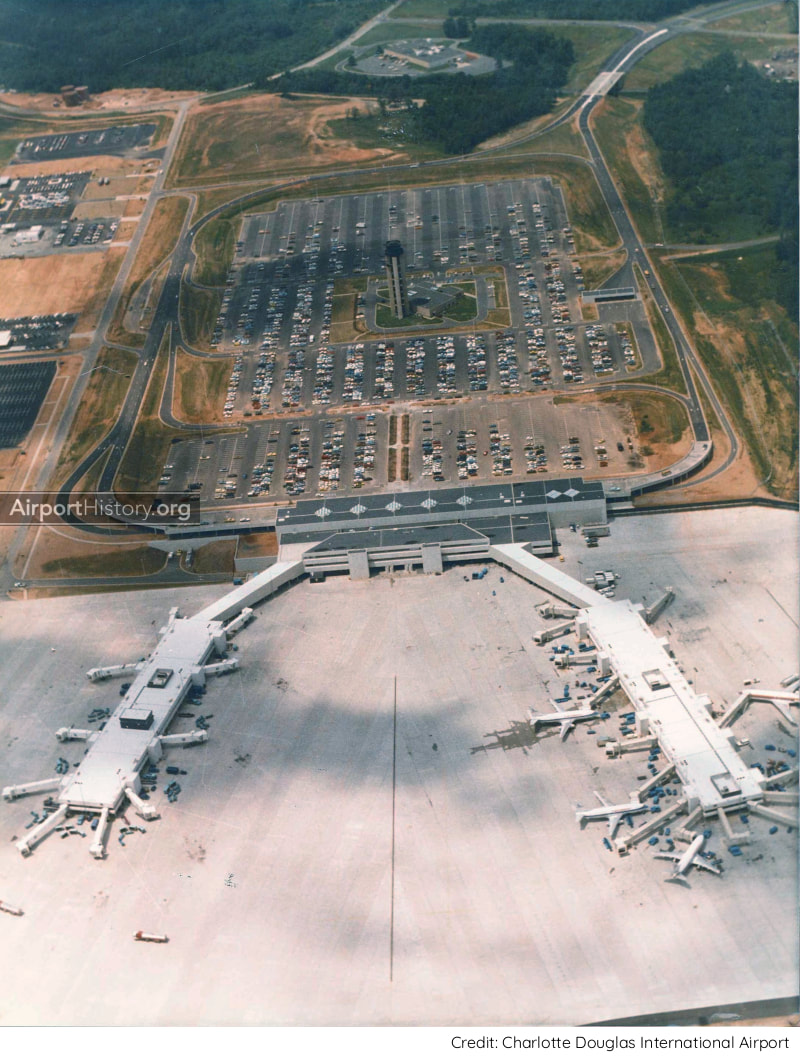















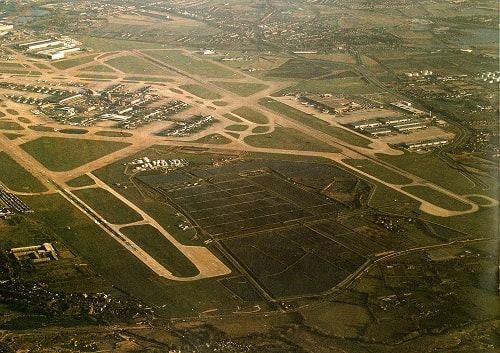




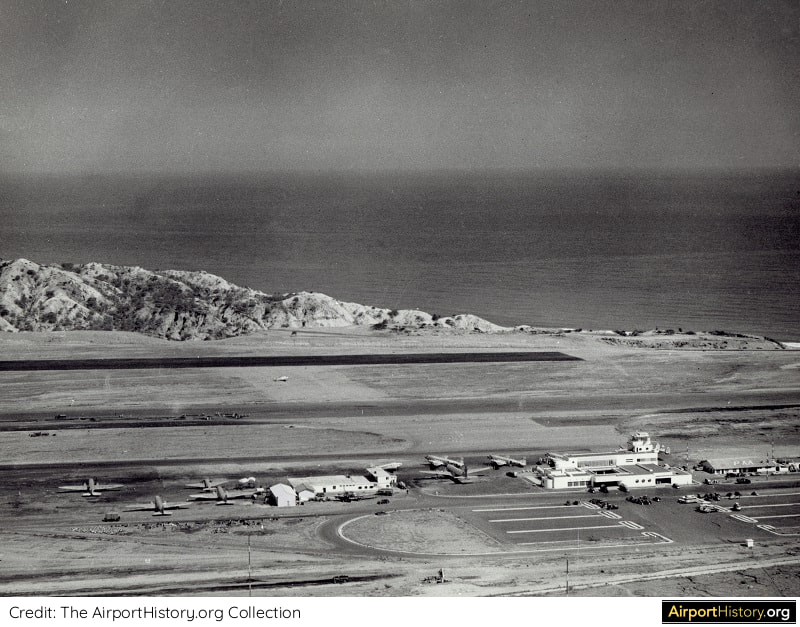


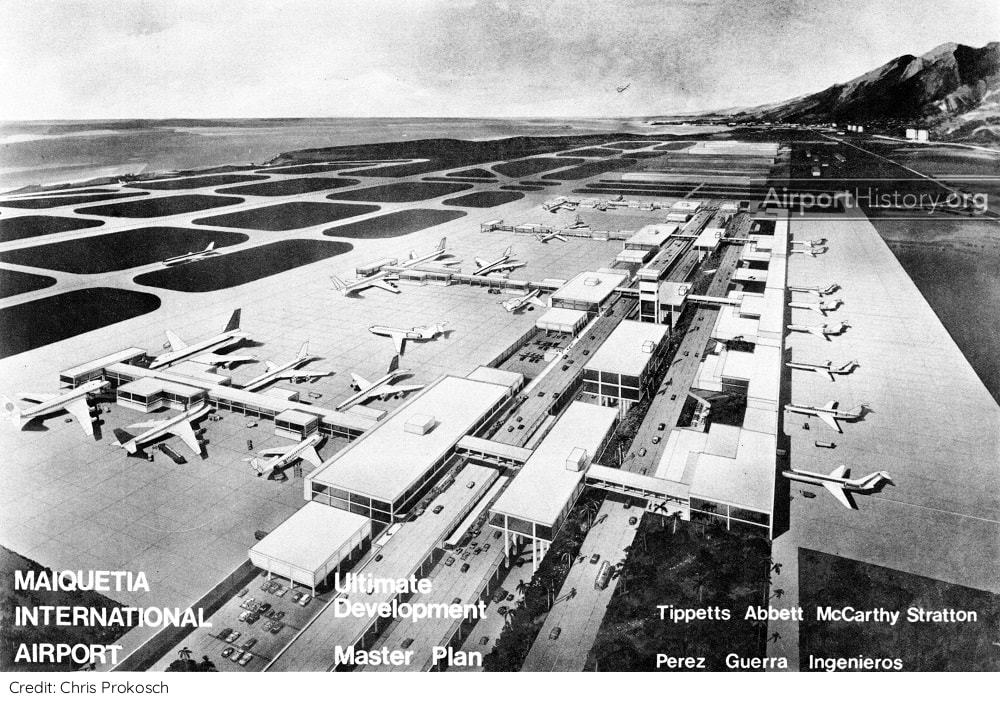
















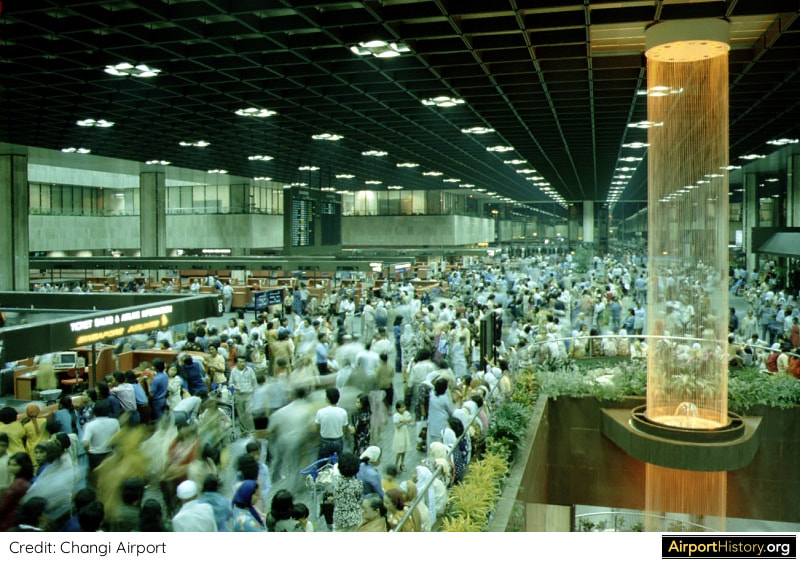






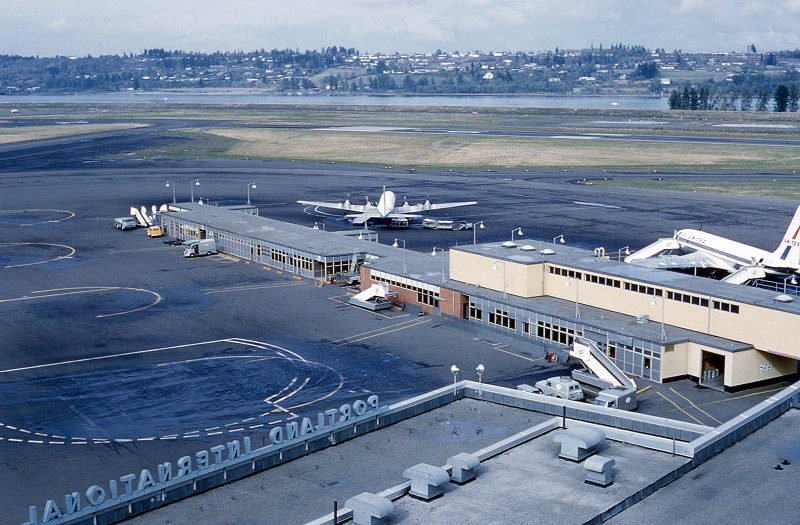

 RSS Feed
RSS Feed